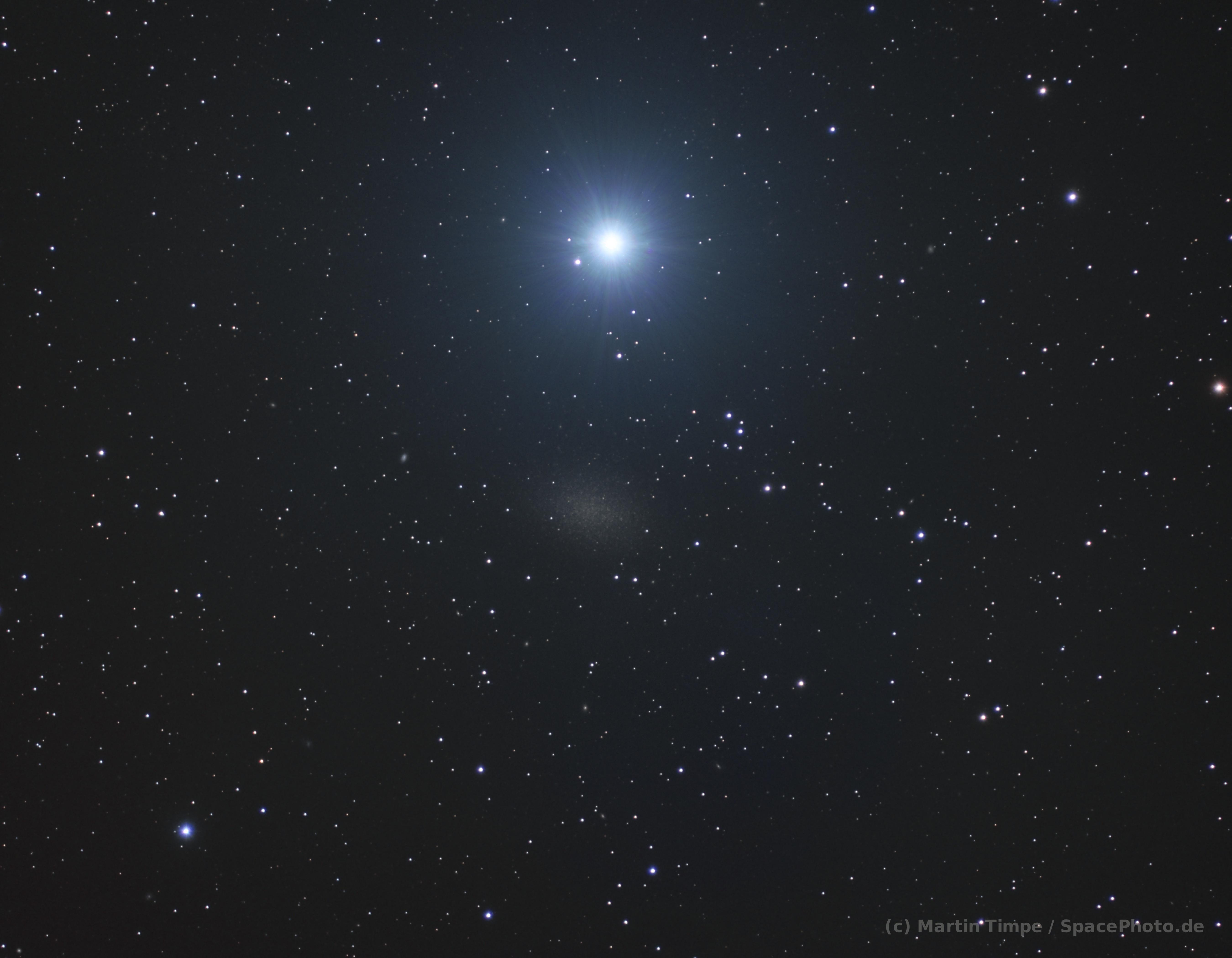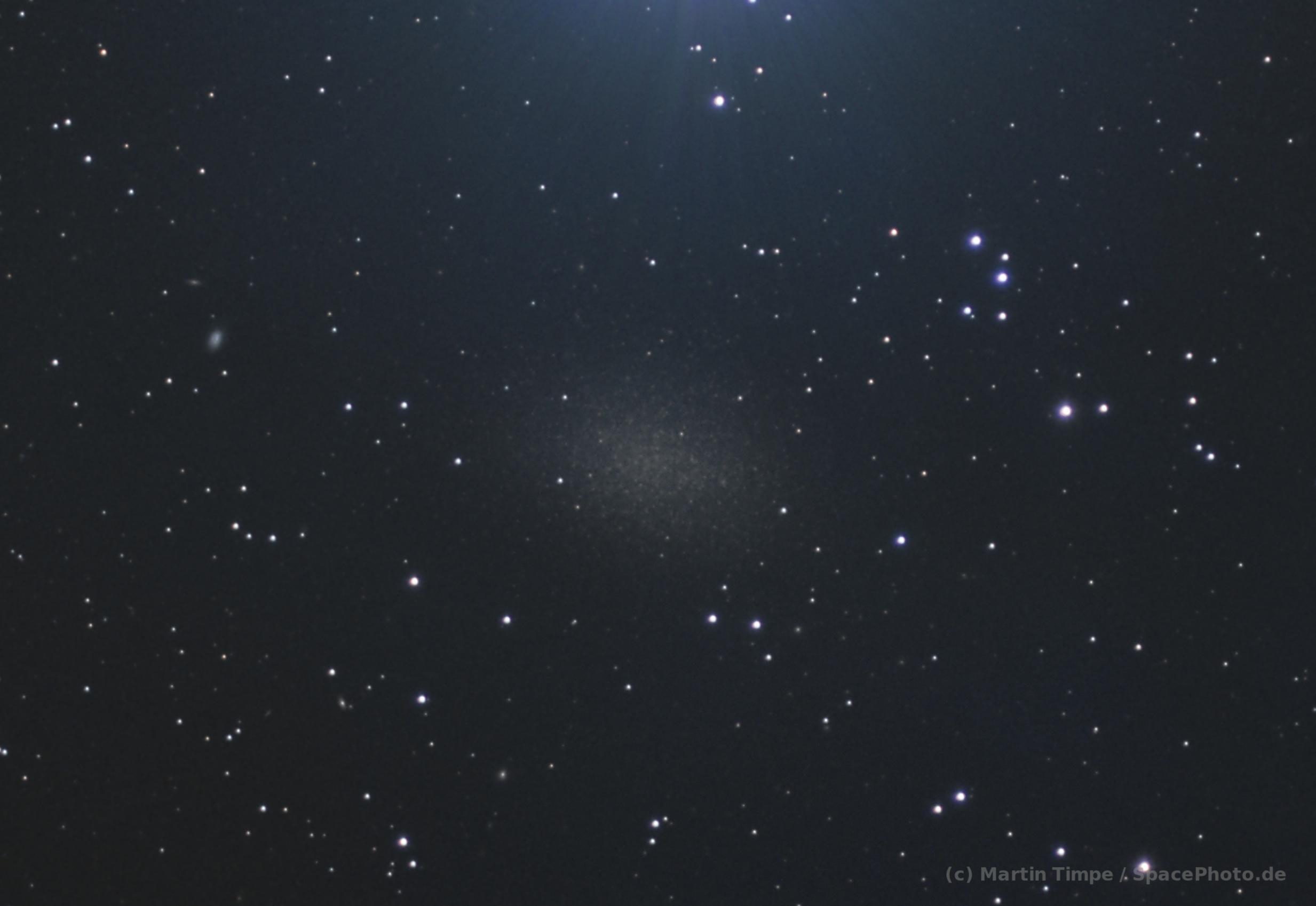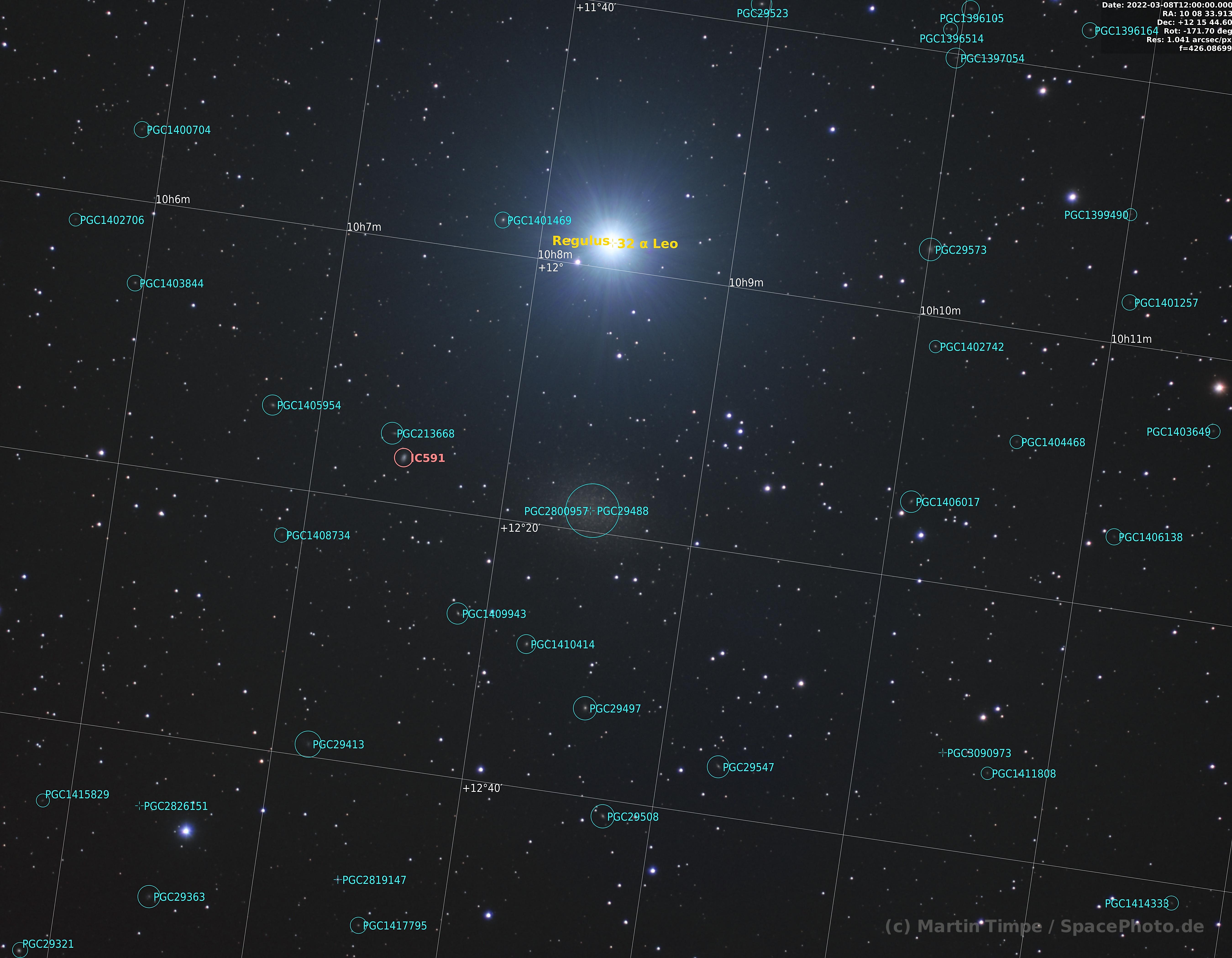Leo-1 Dwarf Galaxy (PGC 29488, UGC 5470)
What is this diffuse spot close to Regulus, the main star in constellation Leo? These thoughts were not pondered by a famous discoverer but by myself while looking for deep sky object around constellation Leo worthwhile for a longer shooting session. I used the planetarium software Stellarium at that time. And the faint spot had never come across to me as a prominent object until that moment. There was no special catalogue identifier or label visible although the object appeared to be extended and not too dim.

Leo-1 Dwarf galaxy, PGC24988, telescope Skopos f=560x0,8=448mm @f/5.6, Camera Atik 460EXM, 14/26/24/46x300s LRGB
A short search revealed that the dwarf galaxy Leo 1 had no entries in the widely known Messier catalogue, Dreyer's NGC catalogue (New General Catalogue) or IC catalogue ("Index Catalogue of Nebulae and Clusters of Stars", a later extension to the NGC catalogue between 1895 and 1908). The only entry was in the "Principle Galaxy Catalogue" where it is assigned the unsuspicious entry "PGC 29488". And the PGC catalogue should not be the most favorite overlay in planetarium softwares as far as I would expect - that's probably why it never came across to me before that. My curiosity was wakened.
In the above image, which was taken with a refractor of 80mm aperture and 560mm focal length at a total exposure time of 9h10min, only a few stars of Leo I can be recognized as clearly resolved. Leo I is a spheric/elliptic dwarf galaxy, which accompanies the Milky Way in 820 000 light years distance to our solar system. Seen from Earth Leo I is located only 12 arcmin besides Regulus, which is "only" 79 light years from our solar system. At approximately 11.2mag and at an angular dimension of roughly 10x7.5 arcmin Leo I is extremely faint, which makes the observation or photography difficult close to Regulus (1.36mag). Only in 1950 the galaxy was discovered by Albert George Wilson on photo plates of the Palomar Observatory Sky Survey. Occasionally the galaxy is also named "Regulus Dwarf". It's mass comes at least to 2.0 +/- 1.0 * 10^7 solar masses (Milky Way ~ 1.5*10^12 solar masses incl. dark matter). The number of stars in Leo I is roughly estimated to 10 millions (Milky Way: 100-400 Billions). It could be clearly verified that Leo I does not rotate. A kinematic study yielded that a black hole with roughly 3 million solar masses is sitting in the centre of Leo I. This is a significant mass compared to the total mass of the galaxy and roughly the same size as the black hole in the centre of the Milky Way, Sagittarius A* (approx. 4.15 million solar masses).
What could be the origin of Leo I? The question cannot be answered clearly. A hypothesis can be that Leo I the remnant of a previous merge or collision of another galaxy with the Milky Way.
Leo I has a low metallicity which is typical for dwarf galaxies. Unlike the word metallicity suggest, in the context of astronomy metallicity deviates from the chemical concept of metal elements. In an astronomical context metallicity means all elements from carbon or above - or easier to remember "metal-rich" in astronomy means that there are high contributions of elements other than hydrogen or helium. In astronomy "metals" can mean anything except hydrogen and helium. The presence of heavier elements requires nucleosynthesis having occurred in an earlier generation of stars. A low metallicity in Leo I therefore means that the stars are rather old compared to the sun and no rapid star formation took place in Leo I.
On the image story: In the beginning of March 2022 was a period of clear weather around the waxing moon and close to new moon. I used these night to track deep-sky objects passing my field of view close to the zenith where the light pollution is at it's minimum at my location and the transparency is best (starting with the Rosetta nebula NGC 2237 which was giving its farewell from the winter sky, the LEO1 dwarf galaxy, the open cluster M67 and this interesting galaxy arrangement that forms an attractive motive for my short focal length refractor telescope). All mentioned objects required more exposure time than available within a single night due to visibility restrictions at my site. Therefore the scheduler was set to slew the objects step by step from West to East over the time of the elapsing night. More technical details on the image acquisition in tabular format can be found below the labeled image.
- Technical Image Details:
Refractor f=560mm f/7 with reducer 0.8 yielding f=448mm f/5.6
Camera Atik 460Exm with Baader LRGB filter set
- Exposure Times:
38x300s L
25x300s R
24x300s G
34x300s B
total: 9h 10min
Date: 07-09.03.2022
Location: Bad Kreuznach / Germany
Mount: Vixen GPD2 mit Boxdörfer Control
Guiding and Exposure Control using INDI / PHD2 / CCDCiel running on XUbuntu Linux
Image Processing PixInsight and Darktable
Sources: https://de.wikipedia.org/wiki/Leo-I-Zwerggalaxie https://en.wikipedia.org/wiki/Leo_I_(dwarf_galaxy) https://de.wikipedia.org/wiki/Regulus_(Stern)

